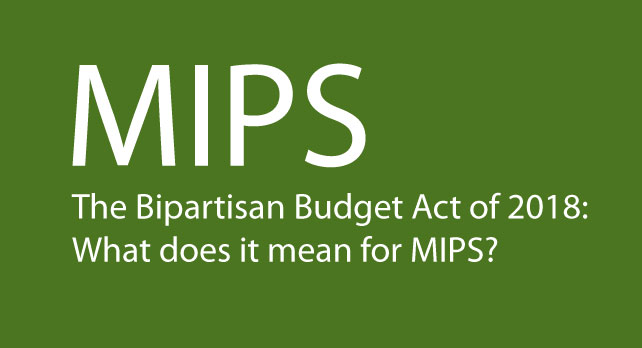The transition years for MIPS has been extended through 2021 thanks to the enactment of the Bipartisan Budget Act of 2018. Along with the extension of the transition years there are changes that apply to the 2018 MIPS performance year.
THE CHANGES
- Post-transition begins in 2022, not 2019
- MIPS performance threshold must be the mean or median of nation historical MIPS scores in 2022.
- MIPS cost category will be 30% of the final MIPS score
- During the transition years 2019-2022, the HHS Secretary will:
- Increase the MIPS performance threshold gradually toward the 2022 requirements
- Set the MIPS Cost category weight between to prepare providers for 2022 throughout the transition reporting periods
- Beginning in 2018, MIPS payment adjustments will only be applied to covered professional services. This means the payment adjustment will not include Part B drugs.
- Also beginning in 2018, the low-volume threshold for MIPS will only be based on covered professional services, excluding Part B drugs. This means more clinicians will be excluded than before.
THE SAME
- The reporting requirements for Quality, ACI and IA do not change (but you can expect the quality benchmarks to keep rising).
- Penalty schedules
- -5% for the 2018 performance year
- -7% for the 2019 performance year
- -9% for the 2020 performance year and beyond
- CMS will still publicize the MIPS scores.
As always, make sure you bookmark our blog to stay current on everything healthcare IT! We are always here to help if needed!
< /br>
–

